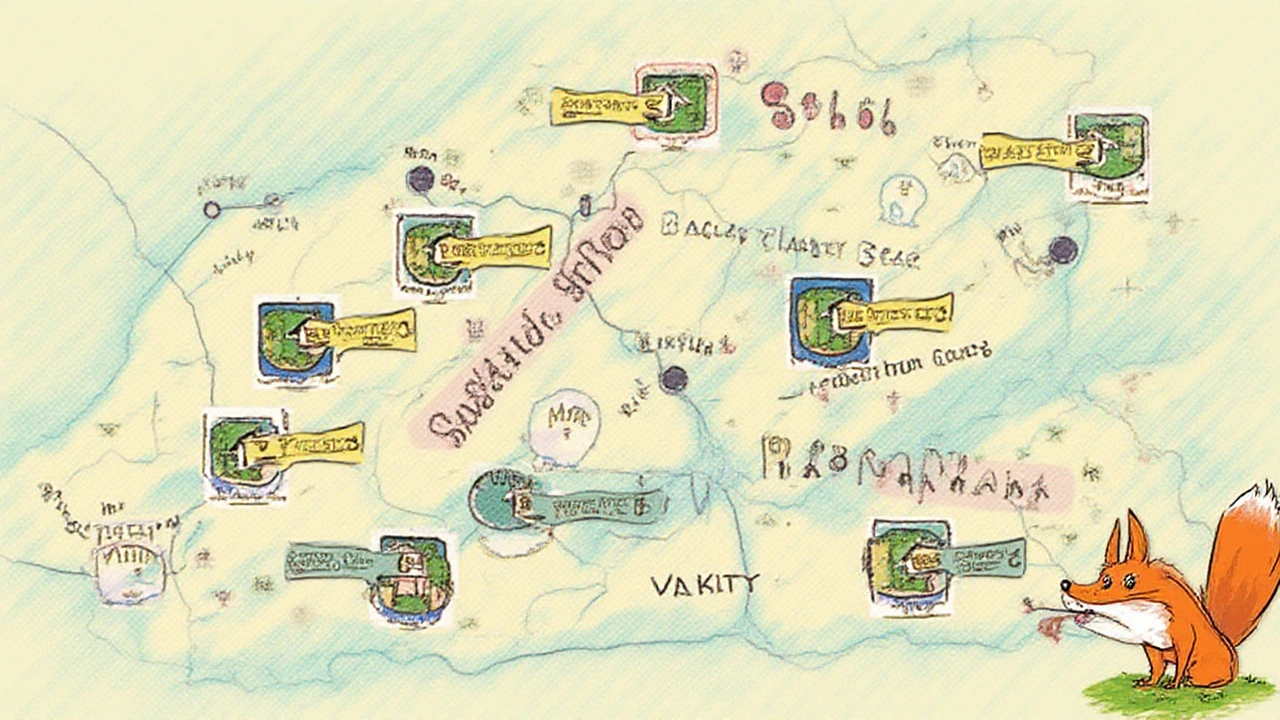There’s a lot more to Rockingham County, Virginia than its rolling hills and Shenandoah Valley charm. Hidden among the quiet backroads and tight-knit neighborhoods is a public school system that’s often the talk of local parents, especially those with curious, school-age kids. If you’ve spent time scanning school report cards or local mom groups on Facebook, you’ll know families around here take elementary education seriously. But just how many elementary schools are there in Rockingham County?
An Overview of Rockingham County's Elementary Schools
First, the number: as of August 2025, Rockingham County Public Schools (RCPS) operates exactly 15 elementary schools. This isn’t some number grabbed from nowhere; the district website lists each school by name, and the most recent Virginia Department of Education data backs it up. These schools range from little rural campuses with less than 150 students to larger buildings closer to city lines, where class sizes hover closer to the state average. That 15 might sound modest, but for a county that covers nearly 850 square miles, it’s quite a feat to maintain enough elementary schools so no kiddo feels left behind.
The county doesn't just lean on public schools, though that's where the clear majority of elementary children go. You’ll stumble on a few private and parochial schools, and homeschooling in the area has quietly ticked up — the pandemic gave some families a taste for schooling at home, a trend that’s lingering for others. But when you talk ‘elementary school’ in Rockingham County, you’re almost always talking about those 15 RCPS schools. Here’s a fun nugget: John Wayland Elementary, established in 1984, is the largest, serving more than 600 students in recent years. On the flip side, Ottobine Elementary, tucked deep in the western part of the county, is known for its super small K-5 classes — the kind where teachers know siblings by name and birthday.
So, what defines an ‘elementary school’ in Rockingham County? The county keeps it classic: kindergarten through fifth grade, no more, no less. After fifth grade, kids move up to middle school. Some districts in Virginia experiment with K-6 or K-8 models, but Rockingham sticks to the tried-and-true K-5 system. It keeps school communities close-knit and transitions predictable for families.
Let’s check out some specifics. The table below shows the current (2024—2025 school year) list of RCPS elementary schools, their enrollment, and established year:
| School Name | Enrollment | Year Established |
|---|---|---|
| John Wayland Elementary | 615 | 1984 |
| Ottobine Elementary | 132 | 1961 |
| Lacey Spring Elementary | 362 | 1992 |
| McGaheysville Elementary | 394 | 1997 |
| Plains Elementary | 401 | 1979 |
| South River Elementary | 253 | 1993 |
| Broadway Elementary | 510 | 1936 |
| Fulks Run Elementary | 161 | 1966 |
| Peak View Elementary | 477 | 2009 |
| Mountain View Elementary | 345 | 2004 |
| Linville-Edom Elementary | 177 | 1958 |
| Elkton Elementary | 326 | 1971 |
| Pleasant Valley Elementary | 413 | 1968 |
| River Bend Elementary | 223 | 2001 |
| Spotswood Elementary | 469 | 1970 |
Why such variety in ages and sizes? The simple answer: geography and history. Settlements springing up in farm country a century ago needed small schools, and local pride has kept some of these buildings alive even as bigger schools popped up elsewhere.

The Landscape of Elementary Education in Rockingham County
If you’ve driven the length of Rockingham County, you know it’s not like Fairfax or Richmond. Here, schools serve as community hubs, and local traditions spill into the curriculum and school events. For instance, schools like Fulks Run and Ottobine still hold annual fall festivals that feel more like cozy county fairs. Teachers truly put their hearts into lessons, weaving local history — think Civil War skirmishes or apple-picking traditions — into everything from reading comprehension to science projects.
Now, let's talk about diversity and resources. Rockingham isn’t the most racially diverse county in Virginia, but its school populations have grown noticeably more varied in the past decade. About 12% of elementary students identify as Hispanic, and English as a Second Language (ESL) programs aren’t rare. Teachers get creative to support a changing classroom — pairing up students for buddy reading, inviting local Hispanic artists to speak, you name it. The push for inclusiveness here is real, though funding can sometimes lag behind larger districts.
Special education services are woven into every elementary school. Unlike bigger urban districts where specialized centers are common, Rockingham’s approach is to bring help to the child, not the other way around. Kids who have learning or developmental differences typically stay in their neighborhood school, with specialists who travel between buildings. That means fewer bus rides, less missing out on school events, and more chances for these kids to be part of regular classroom life. It’s a small-town philosophy with a big impact on student happiness.
Technology has changed the game, even here. While Chromebooks and Zoom classes exploded during the pandemic, many local schools had already begun dabbling in digital learning. Now, every elementary student gets a device, but you’ll also find old-school touches like cursive writing and spelling bees. Balancing tradition and tech: that’s the Rockingham way.
Parents who care about test scores can rest easy — of the county’s 15 elementary schools, 13 met or exceeded Virginia’s Standards of Learning benchmarks last year, according to the 2024 VDOE report. John Wayland and Peak View have received special Blue Ribbon recognition in the past decade for outstanding achievement, though smaller schools aren’t far behind in reading and math gains. There’s a real drive among teachers here to push students but not overwhelm them. Homework most nights is review work, and project-based learning is the norm by the fourth and fifth grades.
Transportation remains a big deal. School bus routes zigzag for miles, and drivers are local legends — families sometimes joke the bus driver is like an aunt or uncle. If you’re moving to Rockingham with elementary kids, don’t be surprised if your neighbors are your fellow bus stop companions. And if you’re out in areas like Bergton, plan on an early start: some children eat breakfast on the bus, coloring in workbooks while rolling down misty backroads.
School meals are also a community affair. From turkey day feasts (where volunteers roast homegrown birds) to monthly pizza nights, eating together means more than just grabbing a tray. The push for healthier meals is clear, too. Many elementary schools now source produce from nearby farms as part of the statewide “Farm to School” program, and don’t be shocked to find kale chips and local apples on the menu.

Tips for Parents and Unique Insights About Choosing an Elementary School
If you’re a parent searching for the best fit in Rockingham County, start with the school boundary maps, posted clearly on the RCPS website. School zoning is strictly enforced, but there are limited hardship transfers if you have unique family needs — like work commutes or sibling placement. Take advantage of open house events each August; teachers go out of their way to make new families feel at home. It’s a small county thing: your child’s principal might remember your name from kindergarten through fifth grade.
Visiting school websites gives you a window into daily life. Most schools post weekly newsletters and event calendars, and some even offer virtual video tours. If you’re the kind of mom (or dad) who likes to get involved, PTOs here are legendary. Some fund outdoor classrooms, while others organize field day or candy bar sales for trips to the Frontier Culture Museum or Shenandoah Caverns. The community vibe is real — volunteering is as much about making new friends as it is about helping your child’s school.
Many parents move to Rockingham from Harrisonburg or even spots north, drawn by the reputation for safe schools and neighborly teachers. Still, it's smart to ask about aftercare programs— not every elementary school offers extended day options, so spot-check if you need childcare beyond 3:00 p.m. The 'parent pickup' lines outside most schools are a sight to behold, growing longer every year as families lean into flexibility and safety concerns.
If special needs or advanced learning are part of your child’s story, you’ll want to dig deeper. RCPS offers enrichment pull-outs for high-ability learners, and most schools have reading specialists or interventionists for struggling readers. If you’re facing an IEP or 504 plan meeting, you’ll be relieved to know the paperwork is taken seriously but the atmosphere is friendly — staff treat you like partners, not just paperwork pushers.
One hidden gem: many local teachers lead summer learning camps, often hosted at the elementary schools themselves. These aren’t just daycares — kids catch fireflies at night, learn about Shenandoah Valley wildlife, and tackle DIY science projects. Sign up early; spots go fast. And for new families, it’s an easy way to help your kiddo make friends before school starts in the fall.
As for the day-to-day: expect plenty of spirit days, book fairs, and field trips. Kids might end the year with a splash day in the schoolyard or a talent show featuring everything from clog dancing to ukulele solos. It’s the kind of place where school pride runs strong and the community shows up for every pancake breakfast and basketball game. If you’re looking for elementary schools in Rockingham County VA with a mix of tradition, innovation, and genuine warmth — this county delivers. Keep these facts and tips in your back pocket, and you’ll feel right at home in the Rockingham elementary school scene.

